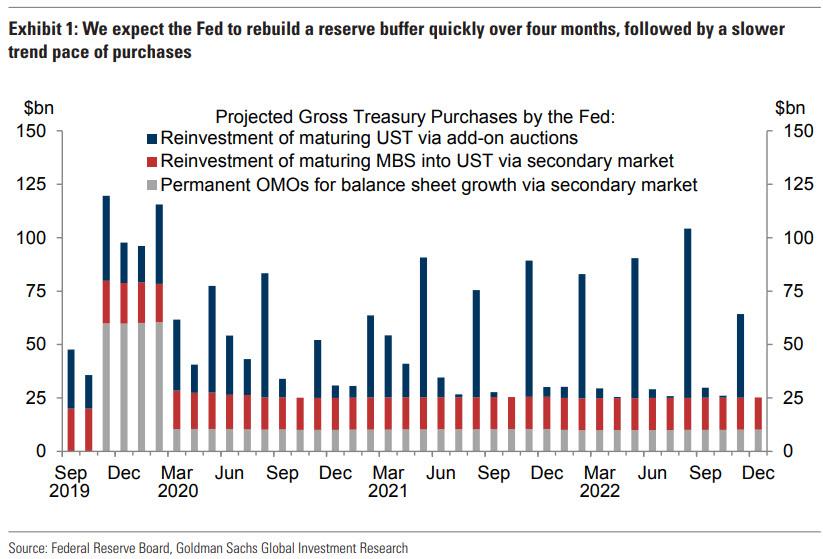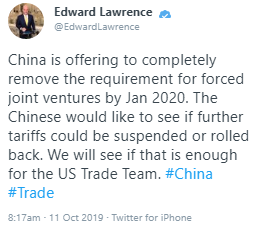I’ve recently been looking into how the courts have been dealing with libel claims in which plaintiff alleges that defendant had made false accusations of sexual assault, sexual harassment, and the like. One question that sometimes arises is whether accusations of sexual impropriety are treated as speech on a matter of “public concern” or merely on a matter of “private concern.” In particular,
- In some states, a defendant in a public-concern libel case gets extra procedural protections under the state’s “anti-SLAPP” statutes: For instance, the defendant may be able to (A) move to dismiss the case very early in the process, and prevail unless the plaintiff can show some real potential merit to the case, and (B) get attorney fees paid if the motion to dismiss is granted.
- A defendant in a public-concern case can’t be held liable for presumed or punitive damages unless the plaintiff can prove the defendant knew his statement was false or at least was likely false (that’s the misnamed “actual malice” standard).
- A defendant in a public-concern case can’t be held liable at all, even for proven compensatory damages, if he simply made a reasonable (nonnegligent) mistake. (In most states, that’s so even for private-concern cases, but some states may allow strict liability for libels on matters of purely private concern.)
- If the statement is true, and plaintiff is suing for disclosure of private facts rather than libel, the plaintiff can only prevail if the statement is viewed as being on a matter of purely private concern.
Unfortunately, courts are all over the map in deciding whether speech is on a matter of public or private concern. That’s true when it comes to consumer complaints, to allegations of drug or alcohol abuse, and allegations of crime, including sex crimes. The Ninth Circuit, for instance, has held that, “[p]ublic allegations that someone is involved in crime generally are speech on a matter of public concern,” in a case where a solo blogger accused a court-appointed trustee of tax fraud in a bankruptcy reorganization of a company. Obsidian Fin. Grp., LLC v. Cox (9th Cir. 2014) (a case I litigated). The California Court of Appeal likewise held that including a plaintiff’s name in a leaflet containing a list of alleged rapists was speech on a matter of public concern. Carney v. Santa Cruz Women Against Rape (Cal. Ct. App. 1990).
The New Jersey Supreme Court, on the other hand, held that a person’s online allegation that his uncle had molested him when the person was a child was a matter of purely “private concern” for libel law purposes. W.J.A. v. D.A. (N.J. 2012). The Iowa Supreme Court held likewise in a similar case. Bierman v. Weier (Iowa 2013).
A Texas Court of Appeals decision handed down yesterday (written by Chief Justice Dori Contreras and joined by Justice Nora Longoria and Gregory T. Perkes) thus struck me as especially interesting, and sound. Here are some key excerpts (the briefs are available here):
In this interlocutory appeal, appellants Blaine Crews and Hannah Crews (the Crewses) appeal the trial court’s denial of their motion to dismiss a defamation per se claim brought by appellees Richard Galvan and Sonia Galvan (the Galvans)….
The Texas Legislature enacted the TCPA, “to encourage and safeguard the constitutional rights of persons to petition, speak freely, associate freely, and otherwise participate in government to the maximum extent permitted by law and, at the same time, protect the rights of a person to file meritorious lawsuits for demonstrable injury.” It protects citizens from retaliatory lawsuits that seek to intimidate or silence them on matters of public concern, i.e., “Strategic Lawsuits Against Public Participation,” commonly known as SLAPP suits, by providing a mechanism for summary disposition of such suits.
The TCPA provides a two-step procedure for early dismissal of claims brought to intimidate or to silence a defendant’s exercise of First Amendment rights. Under the first step, the movant seeking dismissal under the TCPA has the burden to show by a preponderance of the evidence that the nonmovant’s legal action is based on, relates to, or is in response to the movant’s exercise of the right of free speech, the right to petition, or the right of association. If the movant makes this showing, the burden shifts to the nonmovant to establish by “clear and specific evidence a prima facie case” for each essential element of the claim in question….
Here, [Blaine’s alleged libel] that: Richard had sex with Hannah when she was seventeen years old and prior to her senior year of high school; Richard was her youth minister and pastor; Richard sexually seduced Hannah under the pretense of spiritual healing; Richard offered Hannah help to heal spiritually and emotionally after her break up with her high school boyfriend; and Richard told Hannah she was entrusting him to help her heal by giving him her virginity. Under the Texas Penal Code, a sexual assault occurs if “the actor is a clergyman who causes the other person to submit or participate by exploiting the other person’s emotional dependency on the clergyman in the clergyman’s professional character as spiritual adviser.” In such a scenario a person is legally unable to consent to sex.
Hannah and Blaine’s affidavits provide that Richard caused Hannah to submit to his sexual advances by exploiting her emotional dependence on him as her spiritual advisor. Thus, the statements complained of here concern alleged criminal conduct; therefore, the statements were made in connection with a matter of public concern. See Brady, 515 S.W.3d at 884; Campbell, 471 S.W.3d at 624; Doe v. Mobile Video Tapes, Inc., 43 S.W.3d 40, 59 (Tex. App. 2001) (“The possible commission of a crime and the resulting consequences are events of legitimate public concern.”); see also Cummins, 2015 WL 1641144, at *10 (noting that animal cruelty can be a matter of public concern because the penal code makes animal cruelty a criminal offense).
Furthermore, according to Hannah, since the alleged incidents between her and Richard occurred, she learned that Richard had “also been inappropriate with other girls [that Hannah knows], who were also teenagers at the time.” The statements by Blaine that the Galvans complain of relate to the safety, health, and well-being of the community because Richard is around to teenage women at his church and at his children’s school, and the type of coercion, manipulation, and abuse of power alleged by the Crewses could be repeated as a result of his interaction with young women at both institutions…. Clearly, sexual misconduct involving young vulnerable individuals are matters of public concern as they relate to health, safety, and community well-being, all included in the definition of “matters of public concern” under the TCPA….
The Galvans argue that, because the ten-year statute of limitations for the alleged offense had passed at the time of Blaine’s statements, the statements are no longer a matter of public concern. We disagree. The purpose of a statute of limitations is to limit exposure to criminal prosecution to a certain fixed period of time following the occurrence of those acts the legislature has decided to punish by criminal sanctions. Such a limitation is designed to protect individuals from having to defend themselves against criminal charges when the basic facts may have become obscured by the passage of time and to minimize the danger of official punishment because of acts in the far-distant past. Thus, the purpose of the statute of limitations is not conclusive on whether certain communications relate to a matter of public concern….
While we do not decide whether all alleged crimes are matters of public concern in perpetuity, we conclude that the alleged crime here continues to be a matter of public concern based on the factual allegations made by the Crewses….
Having determined that Richard’s defamation claim relates to Blaine’s exercise of his right to free speech, we next consider whether the Galvans established “by clear and specific evidence a prima facie case for each essential element” of his claim. To make this determination, we are to consider the pleadings and any supporting and opposing affidavits…. “Clear” has been defined as “unambiguous, sure, or free from doubt,” and “specific” is defined as explicit or relating to a particular named thing. “Prima facie case” refers to evidence sufficient as a matter of law to establish a given fact if it is not rebutted or contradicted. It is the minimum quantum of evidence necessary to support a rational inference that the allegation of fact is true….
The elements of defamation are: (1) the publication of a false statement of fact to a third party, (2) that was defamatory concerning the plaintiff, (3) with the requisite degree of fault, and (4) damages, in some cases…. As to the third element, … [b]ecause Richard was a private individual, rather than a public figure or official, Richard needed to present clear and specific evidence that Blaine was negligent….
Our review of the record reveals no allegations or assertions by the Galvans that Blaine was negligent. The Galvans never argued before the trial court—nor do they present any argument on appeal—that Blaine was negligent when he communicated the disputed statements. Moreover, the Galvans have never asserted that Blaine knew or should have known his statements were false.
On the contrary, the pleadings and affidavits by both parties indicate the opposite—Blaine learned of the underlying facts from his wife and then contacted Richard and Sonia to ask them about those facts. According to Blaine’s affidavit, Richard admitted to him that the allegations were true.
Hannah’s affidavit states that Richard admitted to Hannah’s mom that they had sex. Nowhere in their petition or in their affidavits do the Galvans state that they informed Blaine that any of the underlying statements were false, or that Blaine knew or should have known they were false. Therefore, Blaine was not negligent. Accordingly, the Galvans have failed to establish a prima facie case as to every element of their defamation action, and the claim must be dismissed under the TCPA….
Section 27.009 of the Texas Civil Practice and Remedies Code mandates that if an action is dismissed under the TCPA, the trial court “shall award to the moving party court costs, reasonable attorney’s fees, and other expenses incurred in defending against the legal action as justice and equity may require.” … [We remand the case to the trial court] to determine the amount of court costs, attorney’s fees, and other expenses that should be awarded to the Crewses ….
Note that the Galvans’ brief acknowledges that “In 2007, Richard Galvan and Hannah Crews were in a personal relationship,” but argues that “Appellants’ complained-of communications egregiously misconstrue the 2007 relationship: The ‘gist’ of the 2007 relationship did not amount to ‘manipulation and seduction,’ so the complained-of communication is not substantially true and is thus false.”
It looks like the disclosure of private facts claim will still need to be litigated in trial court, but the holding that the allegations were on a matter of public concern should be fatal to that claim as well. The Galvans also have a civil assault and intentional infliction of emotional distress claim against Blaine Crews:
The Galvans further alleged that Blaine told Richard that: “he would have put a bullet” in Richard’s head “if Defendant Blaine Crews knew Defendant Hannah Crews in 2007”; the “phone call would not be the end”; Richard’s children “would learn as well”; and that Richard will find out what Blaine “is going to do to him.”
Presumably that claim remains to be litigated.

from Latest – Reason.com https://ift.tt/35tFsqv
via IFTTT











